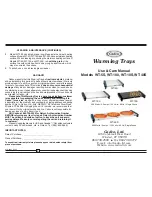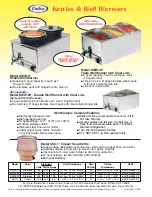
3
CAN / READY
CAN:
Connect cans and then press this button to work.
READY:
If for normal vacuum (except for cans), use this button.
INDICATOR LIGHT
Progress indicator lights show working time.
PULSE / BLOW
Pulse:
Vacuum nozzle in the vacuum tank should point to the sign “vacuum”. Press “pulse” button and
vacuum starts, release it and vacuum stops. It allows users to select different vacuum degree.
Blow:
Vacuum nozzle in the vacuum tank should point to the sign “blow”. Press blow button and blow
starts, release it and blow stops.
ΛΕΙΤΟΥΡΓΙΑ VACUUM
LOOSE:
Apply to food with plenty of moisture. Medium or small bags have a better effect when wet
vacuumizing. Seal automatically the bag after wet vacuumizing for a comparatively long time.
STANDARD:
The default button for dry or wet food. Apply to various kinds of vacuum bags.
TIGHT:
High vacuum degree, which is close to industrial requirements, only applies to dry food. Select
it if food needs vacuumizing with a higher vacuum degree.
SEAL
1. Seal one mouth of a vacuum bag with two unsealed mouths that is cut from a roll bag.
2. Seal ordinary composite bags, e.g., chips bags.
3. Press it and you can seal vacuum bags when vacuumizing is stopped.
CANCEL
1. Press it and then the machine will stop.
2. Press it at any time during vacuumizing, which can protect soft food from distorting.
VACUUM & SEAL
Press it and start vacuumizing. Seal and stop automatically after vacuumizing is complete.
DRY FOOD & MOIST FOOD
DRY FOOD:
The default mode for dry food is standard, which means vacuumizing in a standard way.
The other mode is tight, which applies to food that needs to be vacuumized in a high vacuum degree.
MOIST FOOD:
The default mode for wet food is “Standard”, which applies to large-size bags. The
other mode is “Loose”, which applies to small bags that contain much moisture.
Summary of Contents for CLV?-36
Page 3: ...2...




























